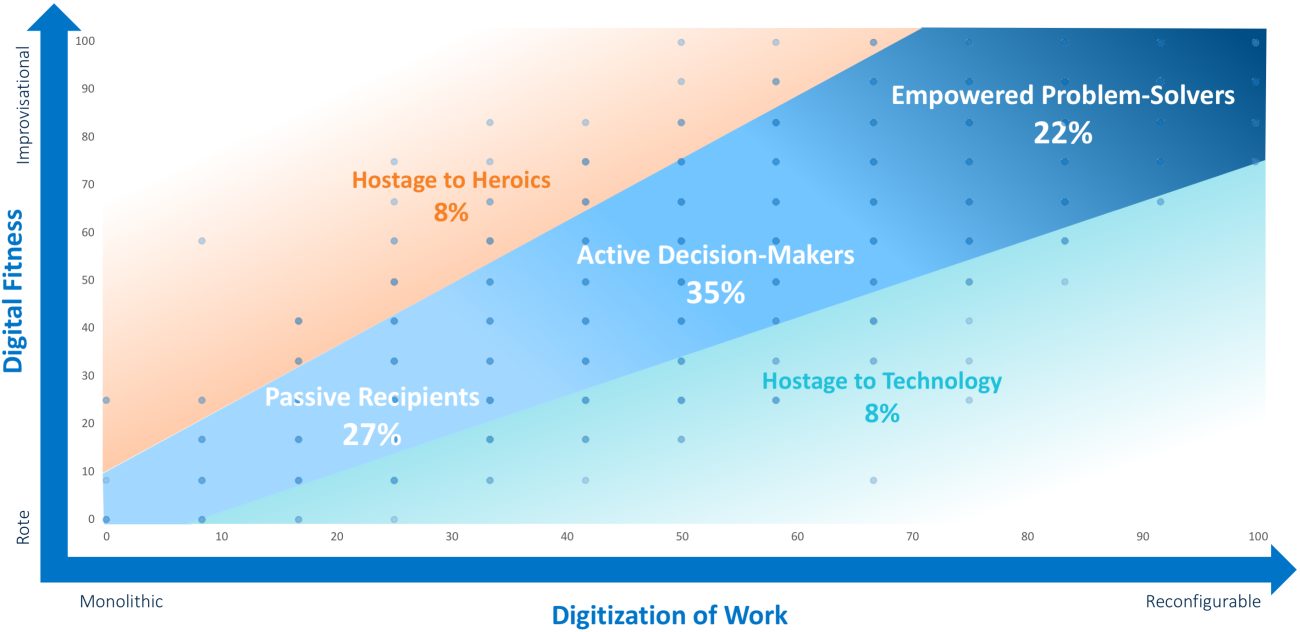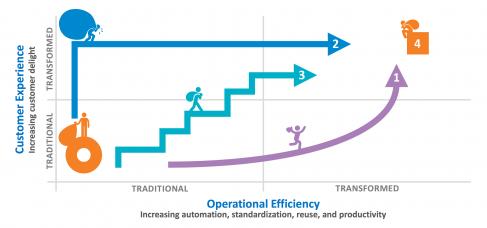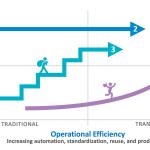For the past six years we have been studying changes in the experience of employees as companies transform their business models to better leverage digital capabilities. We have seen companies redesigning their work environments to adapt to the changing needs of employees and to embed more collaborative work habits. Now, in 2020, the COVID-19 crisis has accelerated investment in workplace technologies and required employees to experiment with remote ways of working. Leadership teams are taking stock of the changes that have occurred and considering how they can better equip and empower employees for work now and in the future.
Companies increasingly need their people to solve complex problems. As companies adopt data analytics, robotics, AI, and other digital technologies, what they demand of their employees is changing. We call a workforce that is confident to solve problems and skilled to work effectively in a digital environment a future-ready workforce.
Developing a future-ready workforce pays off. Companies with a future-ready workforce outperform their competitors, delivering 19 percentage points higher revenue growth and 15 percentage points higher net margin compared to their industry average.[foot]MIT CISR 2019 Top Management Teams and Transformation Survey (N=1311). Self-reported net profit margin correlates significantly with actual profit margin at the p<.01 level. Net profit margin is compared to industry. Self-reported revenue growth correlates significantly with actual profit margin at the p<.01 level. Revenue growth is compared to industry.[/foot]








